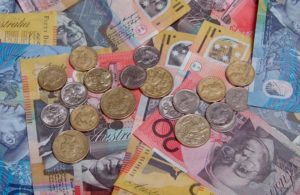 Australian dollar lost ground against its US counterpart on trading Monday, after Chinas exports declined the most since 2009, while continuing tension on the Crimean peninsula triggered safe haven demand.
Australian dollar lost ground against its US counterpart on trading Monday, after Chinas exports declined the most since 2009, while continuing tension on the Crimean peninsula triggered safe haven demand.
AUD/USD touched a daily low at 0.9023 at 7:03 GMT, after which consolidation followed at 0.9027, falling 0.47% for the day. Support was likely to be received at psychological level of 0.9000, while resistance was to be encountered at March 7th high, 0.9134.
The MSCI Asia Pacific Index of stocks fell 1.1%.
A report from March 8th showed that Chinese exports unexpectedly declined 18.1% in February compared to the same month a year ago, which confounded the median estimate of experts, pointing to a 6.8% gain. In the mean time, nations imports climbed 10.1% in February, which exceeded preliminary estimates of an 8.0% gain. This produced the most considerable trade deficit in two years, or 22.98 billion USD last month. Australian dollar is sensitive to data, coming out of China, as the latter is Australias largest export market.
In addition, today the People’s Bank of China (PBOC) reduced the reference rate of the Chinese yuan by 0.18%, which has been the most since July 2012.
This reduction in the yuan rate “is significant, coming on the heels of poor trade data, and suggests a possible policy push to weaken the yuan to help exporters,” said Dariusz Kowalczyk, a Hong Kong-based strategist at Credit Agricole CIB, cited by Bloomberg News. “This would mean rising risks to more downside.”
Ukraines Prime Minister Arseniy Yatsenyuk said that he would visit Washington on March 12, as Russias President Vladimir Putin encouraged the actions of Crimea’s local government, the same media reported. A vote on March 16th may be used by the Crimean government in order to leave Ukraine and join Russia. Pro-Russian forces advanced in the peninsula, despite the call by Western powers to halt a military campaign before the referendum on separation in the area is conducted.
Meanwhile, on Friday the Aussie fell from highs unseen in three months against the greenback, after it became clear that employment in United States’ non-farm sector increased at a faster than expected pace in February. Employment data pointed to a moderate growth in the recent months, which suggested signs of improvement in nation’s labor market, despite that the overall rate of unemployment still remained high and also despite concerns that severe weather conditions slowed down economic growth.
Employers in the country managed to add 175 000 new job positions in February, while preliminary estimates pointed to a lesser gain in jobs, 149 000. In January non-farm payrolls have been revised up to 129 000 from 113 000 previously.
The rate of unemployment, on the other hand, increased to 6.7% last month from 6.6% in January, due to an expansion in nation’s work force. Experts had anticipated that the jobless rate will remain unchanged in February.
The above mentioned employment data urged traders to revise their expectations of the timing of a possible increase in borrowing costs by the Federal Reserve Bank, according to CME Group. Traders now see a 52% probability that the central bank may raise its benchmark interest rate at its policy meeting in June 2015, or one meeting earlier in comparison with before the release of the non-farm payrolls report.
Elsewhere, the Australian currency was losing ground against the euro, with EUR/AUD cross up 0.58% on a daily basis to trade at 1.5390 at 7:54 GMT. AUD/NZD was falling 0.31% to trade at 1.0680 at 7:56 GMT. The pair touched a session low at 1.0666 at 7:01 GMT.





